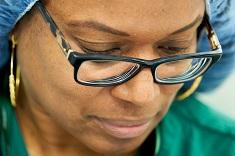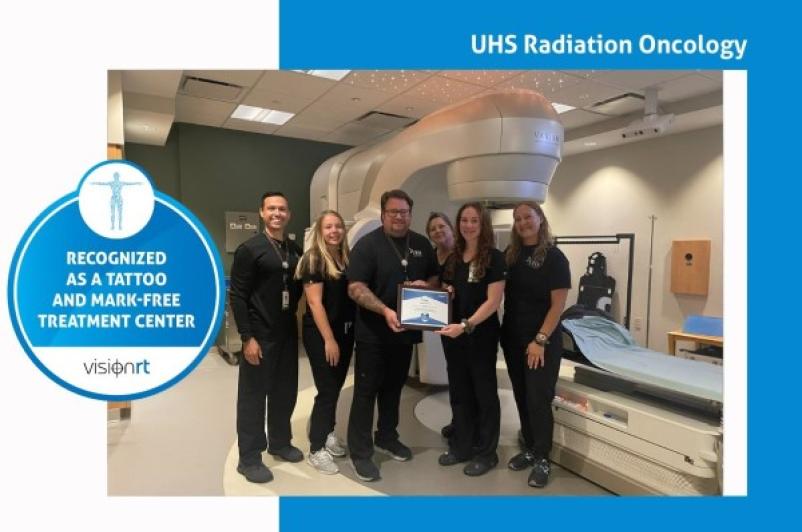
The UHS Radiation Oncology Department has earned a special award for their ability to offer tattoo- and mark-free radiation treatments to UHS patients with cancer.
The award, from Vision RT, recognizes UHS as part of an exclusive but growing group of healthcare centers around the world offering radiation without the use of tattoos or other marks.
Using a technology known as surface-guided radiation therapy (SGRT), UHS is able to deliver a better treatment experience that offers patients significant clinical and psychosocial benefits.
Surface Guided Radiation Therapy (SGRT) is a system that tracks a patient’s position before and during radiation therapy, to aid in setup and treatment accuracy. An entirely non-invasive and contact-free technology, SGRT uses 3D stereo cameras to track the skin’s surface and compare it to the ideal position in the treatment plan with sub millimetric accuracy. It can automatically signal for the treatment delivery system to pause the radiation beam if the patient moves out of the desired position, and it eliminates the need for radiation therapy tattoos or headframes and closed masks for SRS.
Tattoos are often a permanent reminder for patients about the radiation treatment that they went through, which can be a difficult experience in some cases. This advancement is expected to be highly appreciated by patients, as the majority of those needing radiation care have expressed a preference for a tattoo- and mark-free treatment option.
The UHS Radiation Oncology team achieved this after upgrading their SGRT software to the AlignRT software and being trained on the new software. This was a big transition for the UHS therapy staff because they're used to having tattoos to line up our patients. The staff were willing to make the transition because the benefits of utilizing this technology are so great for our patients. It is currently being used for breast, lung, and esophagus.


